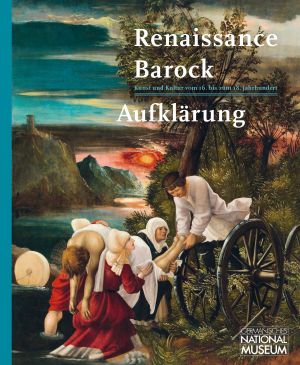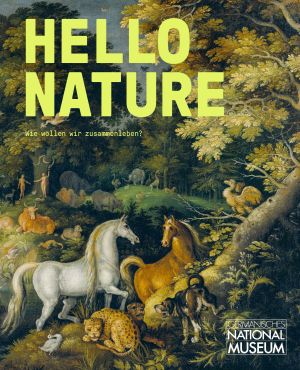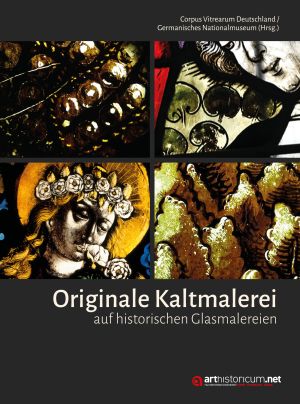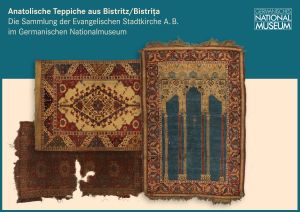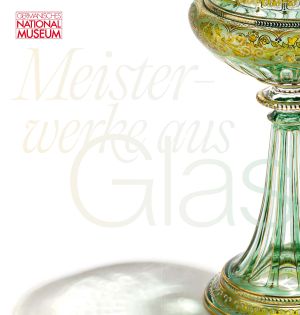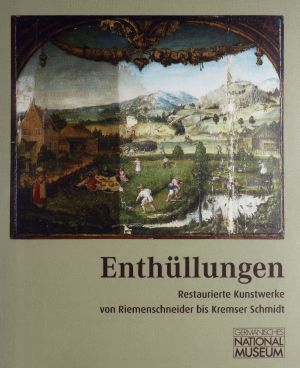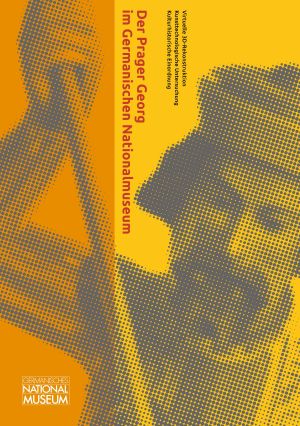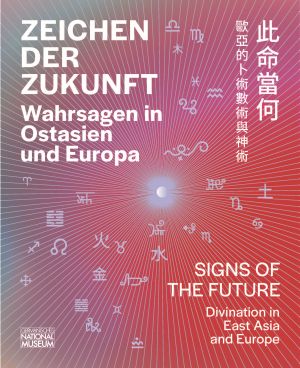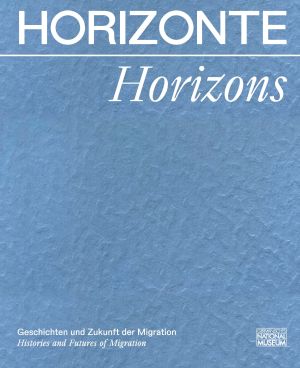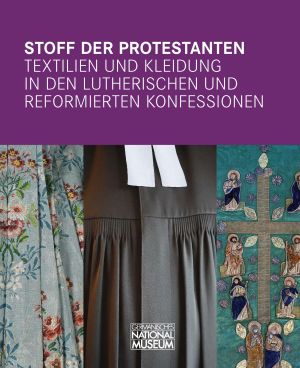Hess, Daniel
Renaissance · Barock · Aufklärung: Kunst und Kultur vom 16. bis zum 18. Jahrhundert
Die Schausammlungen des Germanischen Nationalmuseums, Band 3
This title accompanies the permanent exhibition at the Germanisches Nationalmuseum on art and cultural history of the German-speaking world during the 16th to 18th centuries. The exhibition has been on display since 2010. It features about 1,000 exhibits in 33 rooms and addresses central themes of the early modern period such as collecting and presenting, the reception of antiquity and nature studies, the correlation between art and religion and the changing image of humanity. The complementing publication includes papers that deal with these key themes in a detailed manner. It also comprises a scientific catalogue of all exhibits. Paintings and sculptures, including masterpieces by Albrecht Dürer, Peter Vischer, Lucas Cranach or Franz Xaver Messerschmidt, as well as stained glasses, graphic prints and illustrated books, art handicraft, textiles, jewellery, medals, furniture and musical instruments are being put into their artistic and historical contexts on the basis of the most recent research. In this attractively designed volume about two thirds of the 1,000 exhibits are being presented in high quality colour prints.
Hello Nature: Wie wollen wir zusammenleben?
The book accompanying the exhibition ‘Hello Nature. How best to live with you?’ explores mankind's enduring engagement with nature, shaped by the conflicting dynamics of subjugation, dangers and conservation. In what ways have humans shaped nature? What limits does nature set for humans? And: How can we create a new form of coexistence? Tracing an arc from prehistory and early history to the present reveals the extent to which culture has informed our perception of and interaction. In order to master the current ecological crises, a cultural change is also necessary. We need new visions, images and narratives in order to develop a sustainable coexistence between humans and nature.
Originale Kaltmalerei auf historischen Glasmalereien: Beiträge des Arbeitsgesprächs vom 10./11. März 2016 im Germanischen Nationalmuseum
The phenomenon of 'cold paint', that is, unfired painting on medieval and early modern glass paintings, has only recently come into the focus of restoration and research. In March 2016, a workshop organized by the National Committee of the Corpus Vitrearum Germany together with the Germanisches Nationalmuseum Nürnberg was dedicated to this topic. The presentations and lectures are now available in published form.
Anatolische Teppiche aus Bistritz/Bistrița: Die Sammlung der Evangelischen Stadtkirche A. B. im Germanischen Nationalmuseum
The publication contains the results of the 2017-2020 interdisciplinary research project on the Anatolian rugs from the Protestant Church A. C. in Bistriţa. During their flight in 1944, members of the church congregation brought the rugs with them, along with other valuable objects, and deposited them on loan in the Germanisches Nationalmuseum in 1952. The collection could now be examined in detail for the first time in terms of art history and technology. On the basis of comparisons with other collections and the evaluation of written sources, especially from Bistriţa, Braşov and Sibiu, the collection was classified from its history of origin to its current significance for the memory of the homeland of the Transylvanian-Saxon refugees.
Meisterwerke aus Glas
Today, glass has become commonplace. The former luxury item has become a disposable product.
How does a glass become a masterpiece? Transparency or luminous color? The pure effect of the material or a precious ornamentation of the surface? The collection of the Germanisches Nationalmuseum contains a large stock of drinking and table glasses as well as numerous other objects made of this mostly transparent material. This book presents about 50 of them. It provides insights into the development of hollow glass, beginning with antiquity and extending to the 1950s, and also shows the diversity of the material by means of objects that were used in a wide variety of areas.
Enthüllungen: Restaurierte Kunstwerke von Riemenschneider bis Kremser Schmidt
In einem vierjährigen Projekt wurden 21 hochrangige Gemälde und Skulpturen, u.a. von Riemenschneider, Altdorfer, Wertinger, Mauch und Kremser Schmidt, kunsttechnologisch untersucht und restauriert. Die Ergebnisse der Restaurierung sowie die kunsttechnischen und kunstgeschichtlichen Forschungen werden erstmals im Rahmen der Ausstellung und in der vorliegenden Begleitpublikation präsentiert.
Der Prager Georg im Germanischen Nationalmuseum: Virtuelle 3D-Rekonstruktion – kunsttechnologische Untersuchung – kulturhistorische Einordnung
The meeting of art historians paying a visit to the sculpture of St. Georg on the Exhibition on the Art of the Luxemburger 1979 in Cologne did not enhance further scientific observations in terms of cultural history or art technology. Hence, the historical context of the sculpture’s singularity has remained unquestioned. The polychromy’s virtual reconstruction ends in a survey on both the cultural history and art technology, revealing along with the history on applications on painted figures up to 1400 strong ties to goldsmithing and panel painting in North Italy.
Zeichen der Zukunft: Wahrsagen in Ostasien und Europa / Signs of the Future. Divination in East Asia and Europe
What will the future bring? The exhibition "Signs of the Future. Divination in East Asia and Europe" is the first to showcase instruments, methods and practitioners of fortune-telling in a cross-cultural dialogue. In this bilingual catalogue, leading international experts explore 130 objects from the Germanisches Nationalmuseum, the National Museum of Taiwan History and the Academia Sinica, including a Feng Shui compass, scientific instruments and even tarot cards.
Due to the COVID-19-Pandemic, the exhibition opening at the Germanisches Nationalmuseum, scheduled for December 2020, takes place in 2021.
Horizonte - Horizons: Geschichten und Zukunft der Migration / Histories and Future of Migration
Venturing into the unknown is one of the fundamental experiences of humanity, a throughline from the Stone Age to the space age, and part of every family history. Where to go? What to take with you? This volume introduces people who have become migrants for a large variety of reasons, including author Judith Kerr and artist Gerhard Richter. Their stories highlight that art and culture also depend on migration. Following the phases of migration, from departure to arrival and arriving, the volume’s authors describe experiences of migration. The final chapter is a glimpse into the future, i.e. mankind’s step into space between science and fiction.
Stoff der Protestanten: Textilien und Kleidung in den lutherischen und reformierten Konfessionen
Wissenschaftliche Beibände zum Anzeiger des Germanischen Nationalmuseums, Volume 46
Textiles and clothing play a significant role in Christianity. After the Reformation, various textiles and types of garments took on specific denominational character for adherents of the Lutheran and Reformed faiths. Depending on the spaces in which such items were used, and by whom, they could be expressive of theological convictions and church ceremonies, social order and political power, and religious knowledge and economic strategies. The essays in this conference volume analyze the manifold layers of meaning that Protestant denominations ascribed to clothing and textiles from the Reformation period to about 1900.



